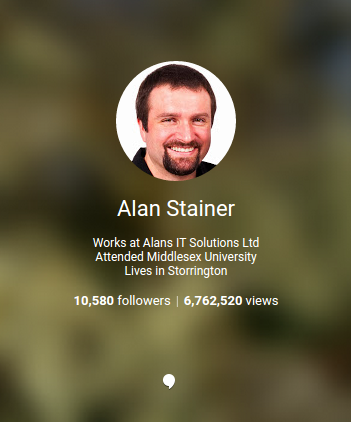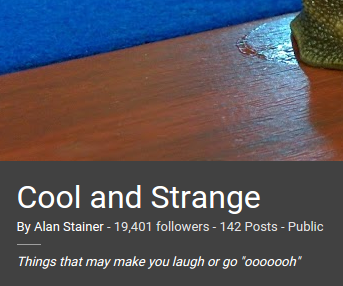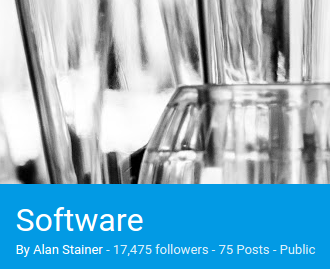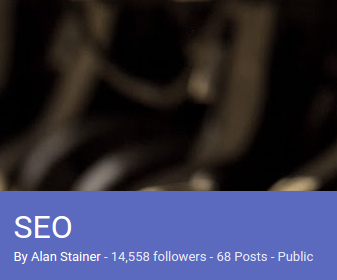
Follower counts
Five months ago, on May 3rd 2015 I had 9,873 followers on Google+. That’s according to the stats supplied by CircleCount. On May 4th 2015 Google added Google+ collections.
Fast forward to today, I now have 10,580 followers. Not too bad. That’s an increase of 707 in just 5 months.

What about those collections? Collections have their own set of followers, built from people that have circled your profile, but also those that have specifically decided to follow a particular collection.
Here are some of mine. Starting with Green Technology at a whopping 20,213 followers.

Cool and Strange is not far behind with 19,401 followers.

A little further behind, but still with a healthy following is Software with 17,475.

Lastly bringing up the rear, but still with a respectable 14,558 followers is my SEO collection.

Delving into the numbers
So what could be causing the sudden uplift in follower counts for those collections?
At this point I must give you a disclaimer. All four of the collections highlighted above are featured collections, which means Google suggests them for people to follow. Yes, I am thrilled. No, it’s not the end of the story.
Why isn’t it the end of the story? There are two main reasons why you follow someone on social media. 1) Either you know the person or brand, or you are at least aware of them. 2) You are interested in what the person or brand has to say.
The first point is obvious and explains follower counts on all of the networks. Big celebrities get loads of followers, simply by being well known. While the average Joe (me included) has to work hard to get more than friends, family and acquaintances. To clarify what I mean, imagine a list of 1000 names. Mine is in there somewhere, but you won’t be interested in it unless you know who I am. You won’t have a clue about my likes and dislikes or what I post about every day. Therefore, you won’t immediately want to follow me. If you see a celebrity in the list, you’ll recognise them straight away and will have a fair idea about what they will post. You may decide to follow them.
The key ingredient here is that you are interested in the content, not the person. That is where collections come in.
Collections align with intent
When you follow a collection, it is because you are interested in a particular subject. Given that my green technology collection has gained almost 10,000 more followers than my own profile in just 5 months, that says to me a lot of people are very interested in that subject.
I have noticed that engagement has improved dramatically since posting to collections. Why is that? Could it be because those 10,000 followers above and beyond my profile follower count are actively engaged with the subject? Just by following the collection they have expressed an interest in the subject and are therefore more likely to respond positively when content enters their stream.
Collections are web pages
Every collection is a web page accessible to the outside world. Not only can Google+ users share your collections with each other, but you (and they) can link to them from outside of Google+. Obviously this only works if it is a public collection.
The uses you can put this to are many. A news organisation might create a live feed of information on a particular topic. Sports, local politics, crime and others are all good subjects that a news organisation might want to promote. The great thing is, they can promote their collections on G+, Twitter, Facebook, in emails, on posters. In fact, anywhere they would normally promote a web page, they can promote a collection. Followers don’t even need a Google+ account, they could instead simply bookmark the page!
A small business might use collections to post special offers, or they could create a ‘how to’ collection for their specific field. How about a local band creating a collection of events and gig dates? An art gallery might create collections for featured local artists, portraits, landscapes, surreal, modern, impressionism, etc.
The point is, it makes the content you create easily accessible and searchable. Oh yes, search. Each public collection has a good chance of appearing in search results pages too, which adds another arrow to the quiver of visibility.
One more thing
Collections are still new. Following a subject instead of a person is also new, but to me it makes much more sense.
Have you given collections a fair whack with the stick yet? If not, why not? Perhaps it’s your turn to shine.
